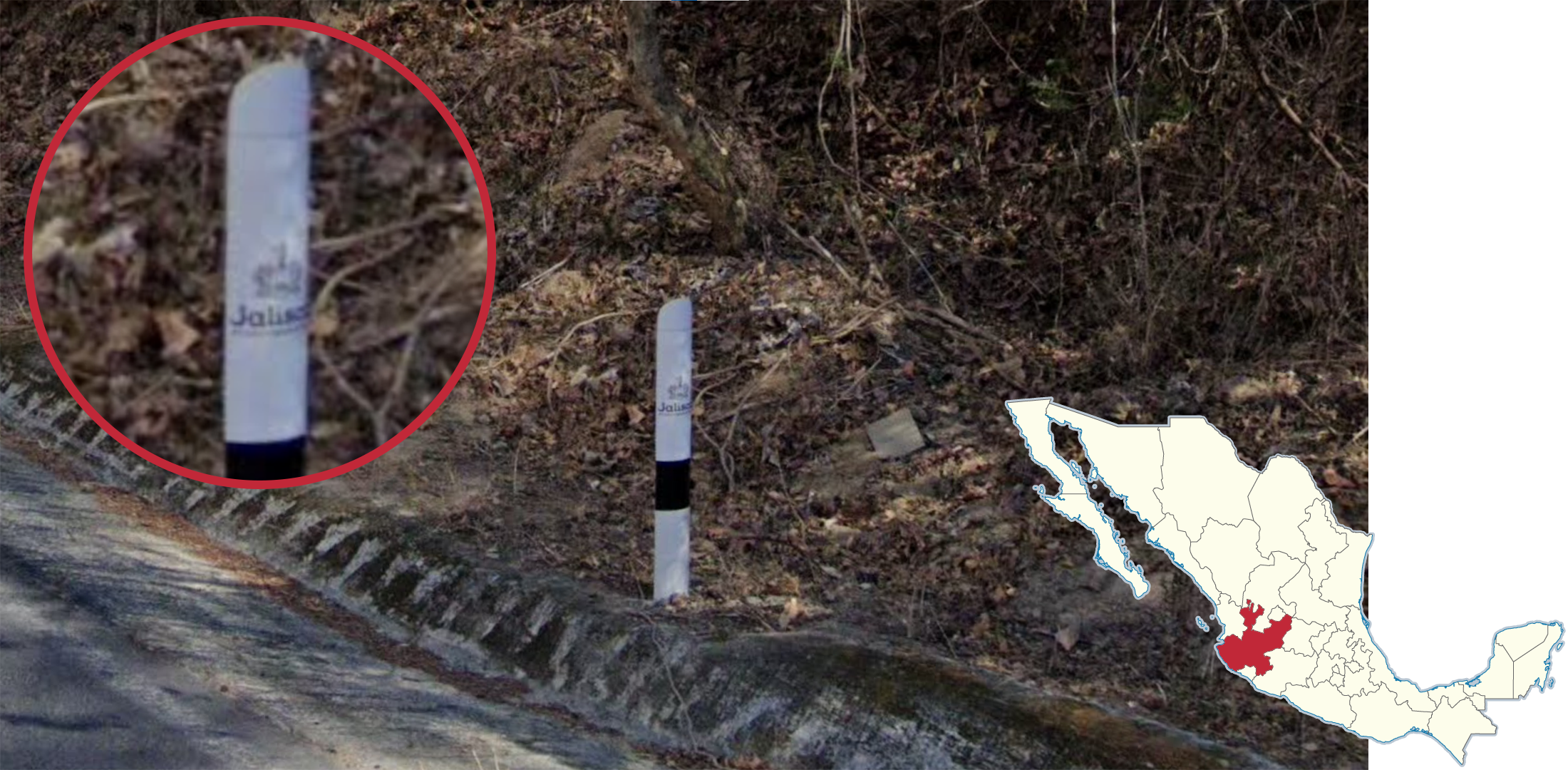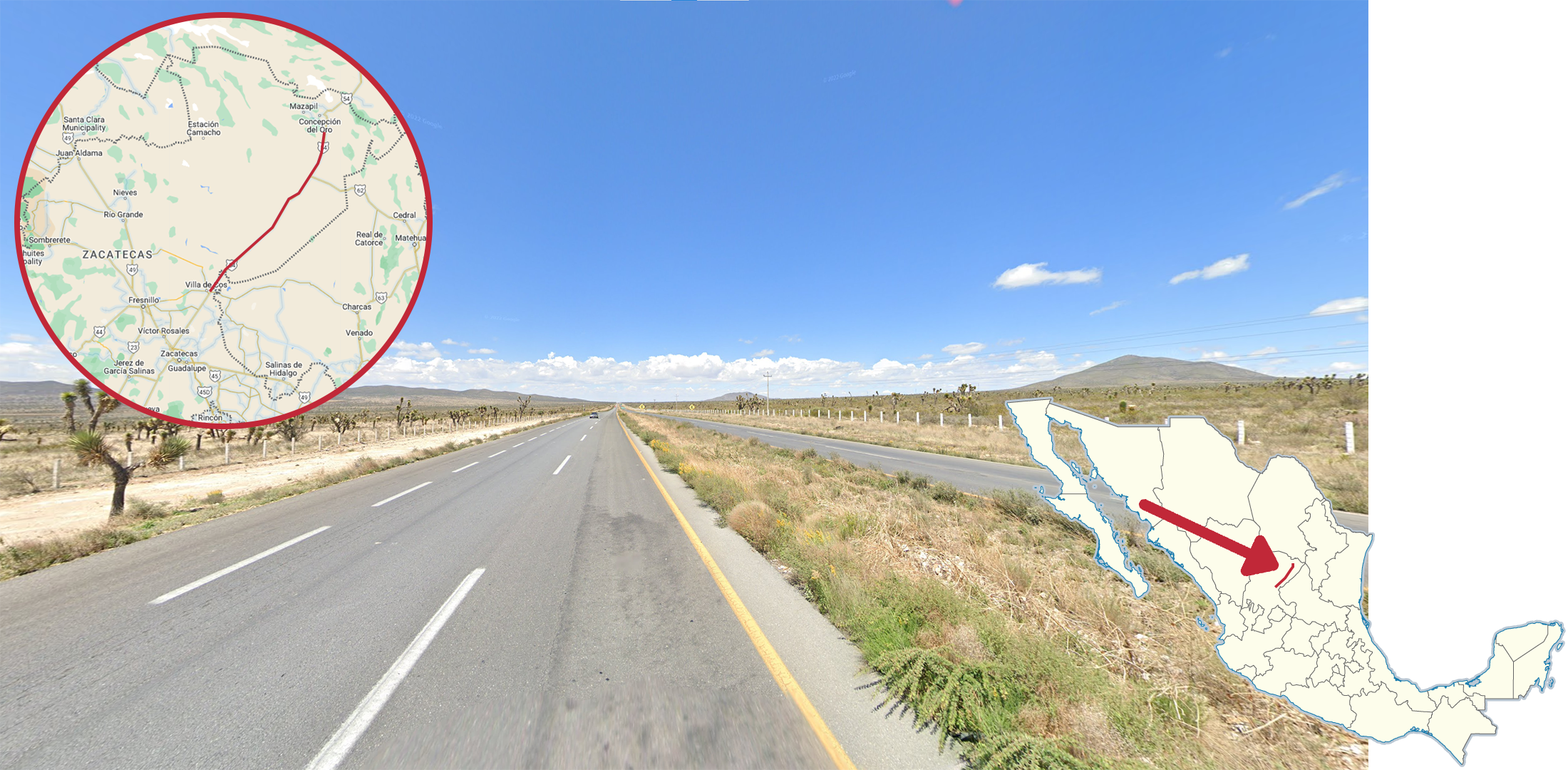
Mexico
Bollards with a red band near the top are unique to Nayarit, apart from one exception being Federal Highway 190 on the Oaxaca-Chiapas border.
Grainy pavement with a blue-ish grey tinge is a common sight for the states of Tamaulipas and Nuevo Leon.
NOTE: In Tamaulipas, larger roads very commonly feature dashed outer lines.
The area around Mexicali features flat farmland with a ridge to the west. Washingtonia palms are very common and these poles made out of brown wood can be found.
The twin volcanoes of Iztaccíhuatl and Popocatépetl are found on the border between the State of Mexico and Puebla. Keep in mind that they are usually much less visible than depicted in the image, which is just for reference.
The area around San Cristóbal Suchixtlahuaca and south of it in Oaxaca often feature rolling hills with really distinct orange and beige-tinged soil, passing from one colour to the other with each hill. The beige-tinged soil can be seen more prominent in some locations.
The 54 is a divided highway that runs through northeastern Zacatecas which features yucca trees spammed on both sides of the road. Additionally, the streetview car is often exposed and appears almost white due to the sunlight.
GeoGuessr’s own official maps are not very good, for a variety of reasons. Plonk It recommends the following maps instead:


















































